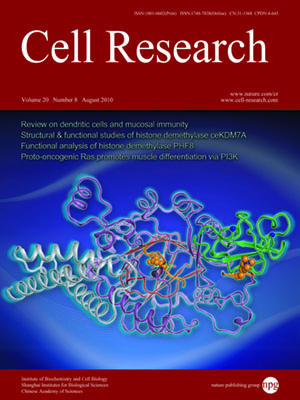
Volume 20, No 8, Aug 2010
ISSN: 1001-0602
EISSN: 1748-7838 2018
impact factor 17.848*
(Clarivate Analytics, 2019)
Volume 20 Issue 8, August 2010: 935-947
ORIGINAL ARTICLES
Rice leaf inclination2, a VIN3-like protein, regulates leaf angle through modulating cell division of the collar
Shu-Qing Zhao1,*, Jiang Hu2,*, Long-Biao Guo2, Qian Qian2 and Hong-Wei Xue1
1National Key Laboratory of Plant Molecular Genetics, Institute of Plant Physiology and Ecology, Shanghai Institutes for Biological Sciences, Chinese Academy of Sciences, Shanghai 200032, China
2State Key Laboratory of Rice Biology, China National Rice Research Institute, Hangzhou 310006, Zhejiang, China
Correspondence: Hong-Wei Xue, Qian Qian,(hwxue@sibs.ac.cn; qianqian188@hotmail.com)
As an important agronomic trait, inclination of leaves is crucial for crop architecture and grain yields. To understand the molecular mechanism controlling rice leaf angles, one rice leaf inclination2 (lc2, three alleles) mutant was identified and functionally characterized. Compared to wild-type plants, lc2 mutants have enlarged leaf angles due to increased cell division in the adaxial epidermis of lamina joint. The LC2 gene was isolated through positional cloning, and encodes a vernalization insensitive 3-like protein. Complementary expression of LC2 reversed the enlarged leaf angles of lc2 plants, confirming its role in controlling leaf inclination. LC2 is mainly expressed in the lamina joint during leaf development, and particularly, is induced by the phytohormones abscisic acid, gibberellic acid, auxin, and brassinosteroids. LC2 is localized in the nucleus and defects of LC2 result in altered expression of cell division and hormone-responsive genes, indicating an important role of LC2 in regulating leaf inclination and mediating hormone effects.
Cell Research (2010) 20:935-947. doi: 10.1038/cr.2010.109; published online 20 July 2010
FULL TEXT | PDF
Browse 2419


